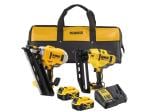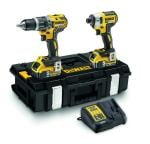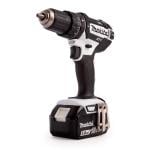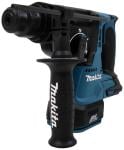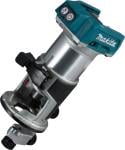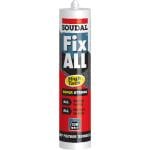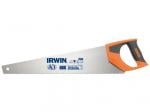How to Remove Rusted Screws
Trying to remove a rusted screw can be a real pain. If the surface is rough or warped and the rust has taken over it can be tricky to get it out, even with the right tools at your disposal. There are several ways to go about removing a rusted screw, but remember that safety should always be your first concern. Here we will have a look at how to approach a rusted screw step by step, until it is removed and even cleaned up and ready to use again.
Safety First
As we said, the most important thing should always be your safety. Here are a few ways to protect yourself before you get started. Exactly what you will need to wear or do will depend on how difficult the screw is to remove, and what method you end up using, but it is best to be prepared.
- Wear the right gear – Personal Protective Equipment (PPE) is an essential part of most jobs. In this case, you will need goggles to protect your eyes, a surgical mask to stop you from breathing in any nasty particles, and some good thick gloves.
- Check your environment – if you may have to use strong chemicals like rust removers you must ventilate the area as much as possible. You will also want to keep the area clear of any children, animals, or anyone really while you are working.
- Check the instructions and labels – whether you are using rust removal products or a blow torch you must check the directions and use as instructed.
- Prepare for any eventuality – if you are indeed using heat to try and remove your screw, keeping a fire extinguisher to hand is a good idea. If you are fully prepared then you should avoid unnecessary danger.
Use a Hammer and a Screwdriver
Now that you are prepped, you can try and remove the rusted screw with our first handy method – using a hammer. It may sound counter-intuitive, but hitting the screw with the hammer can dislodge rust and make it easier for you to access with a screwdriver. Here is how you do it:
- Make sure you are wearing your PPE, then get a metal or ball-peen hammer.
- Hit the screw 2-3 times with the hammer. This will break up the rust allowing your next step to be more effective.
- Get some rust penetrant and spray liberally on the screw. This will now penetrate the rust easier thanks to your hammer blows. Leave it to soak in for a few minutes.
- Take up your hammer and give it another few blows.
- Depending on the screw, you may wish to leave it for a few more minutes to let the rust penetrant soak through and lubricate the screw.
- Now you can take a screwdriver (making sure it has the right head) and remove your screw.
- If you are still having issues, or if the screwdriver is slipping and you think it could cause more damage to the screw head, stop and reassess. A gripping paste, a product designed to stop this slipping, is a great next step to take. Again, make sure you always follow the instructions.
- Once your screw is out you don’t have to throw it away. To reuse, simply place it in a solution of vinegar and baking soda and the rust should come right off.
Apply some heat
If the above method has proved unsuccessful another way to remove your screw is by applying heat. The downside to this is that heat is more dangerous and can cause some bad outcomes. One of the main problems is that rust penetrant is usually flammable, so your first step is to reduce this as an issue.
- Make sure you have the right gear and a fire extinguisher to hand.
- Use a water-based degreaser to remove all traces of the rust penetrant, clean the screw, and the area around it.
- Heat the screw using your blow torch. Once it starts to smoke, stop. It shouldn’t go too far and start to glow, smoking is fine!
- Instantly cool the screw by applying cold water or a wet rag. The rust will have expanded with the application of heat, and then contracted with the cold. This should break the rust seal.
- Repeat as necessary and try and remove the screw.
- If it starts to move but won’t fully come out reapply rust penetrant now that it can penetrate deeper. It should now come out easily.
Remember you should always try the easiest and least messy and dangerous method first, and ensure that you place your safety above everything else. Now that you can easily remove your screws, give them a clean and use them again.
Screw Seizing and what it is?
Mechanical teams and teams in charge of maintenance and repair know well the concept of seizure. There is a link between it and friction, which causes particles to be transferred from one surface to another. As is the case with screw-nut assemblies, minuscule fragments of material, such as coatings of protection, can be detached as a result of friction between the threads between the two parts. These particles that accumulate in the assembly can cause the screw or bolt to experience seizing when there is a build-up of these particles, and in severe cases can even block the assembly. The good news is that it is quite easy to predict when seizing will occur because it is so easy to predict. There is a greater risk of this happening in fasteners that are made from friction-sensitive materials, such as aluminium, titanium, and stainless steel, that are more likely to occur.
Corrosion, what is it and how does it happen?
Corrosion is a natural process that occurs as a result of chemical reactions between atoms in the metal. In essence, it is a process of converting certain materials into a more chemically stable form, such as oxides, by transforming them into certain substances - usually metals. As soon as water and oxygen come into contact with each other in the air, the process is triggered. A number of factors will determine the speed of corrosion in a given metal alloy, including how it was fabricated and whether any protective coatings or treatments have been applied. The threads of the screw and nut assembly can be damaged if they are tightened too much, causing stress to the threads. Corrosion may also be an issue as a result of this process. Also, when there is a liquid present between the screw and the nut, capillary action can occur. When a liquid is present, the process can be accelerated because of the capillary action.
There is corrosion on the bolt
The extra layer of rust covering the affected parts produces an increase in the volume of the affected parts due to the increase in corrosion volume. As a result, additional pressure is applied over the threads of the assembly, causing it to become more difficult to remove or adjust the assembly because of the additional pressure. What is the best method for removing stuck screws and how can you prevent your screws from seizing?
If a bolt becomes corroded or seized, what can you do to prevent it from happening?
It is essential to lubricate machinery and mechanical structures when servicing and maintaining them. The effectiveness of this process can be improved and the life expectancy of moving parts can be prolonged. There is also a need for static assemblies to be maintained regularly, primarily in order to keep them from becoming seized, as this helps to prevent the occurrence of seized assemblies. If left unaddressed or unresolved, these problems will negatively affect production lines or machinery and could cause interruptions or disruptions to those lines or machines if left unaddressed or unresolved.
Keeping things lubricated
Assemblies should always be lubricated before they are assembled. In addition to protecting the threads against corrosion, the lubricant is also used to minimize the mechanical stress placed on the threads by the lubricant as that is one of the causes of the threads seizing in the first place. Choosing the right lubricant for the application is also essential to ensuring the best performance. There are a few factors you should consider when designing the assembly, such as the materials to be used, and the conditions that will be present within the assembly, such as temperature and humidity, in addition to chemicals that may be present. In general, a dry lubricant such as Molybdenum Disulphide lubricant or a similar formulation is best suited to the purpose of lubricating assemblies. It helps to reduce friction between the threads by preventing dust or impurities from accumulating between them, preventing the formation of deposits on the threads and resulting in less seizing. WD-40 is another option that is popular among many people.
Observations made
Observation is one of the most important steps before addressing an assembly. As a result, you will be alerted to any potential difficulties when loosening the fastener and being able to detect any problems before the problem arises will allow you to resolve it in a more successful manner. In order to make the right choice, you should keep the following in mind:
- Corrosion is evident
- Possibly lubricating traces can be seen on the surface
In order to determine the extent of the corrosion, it is essential to determine whether there is any rust present at all - even minor traces. In contrast, in the event that there is lubricant present in the screw, it is typically possible to loosen it with a spanner or flat spanner as long as the screw is saturated with lubricant. It could, however, be an indication of a possible seizing condition if the machine is without lubrication.
What you need to know about removing seized screws
Whenever a seized screw has to be removed, there is one golden rule to follow - never force the screw out of the hole. Attempting to force the screw will generally have a counterproductive result and can lead to the screw breaking or the screw head being damaged to the point that it cannot be removed.
It is recommended to apply penetrating oil to the affected area
In order to overcome the issue of seized or rusted assemblies, the first step should be to apply penetrating oil to the assembly. Upon disassembly, the oil is able to penetrate between the threads and the oxide, dispersing deposits that are caused by seizing, such as rust and scale, which eases removal. In spite of this, it is important to be patient and wait for the product to work for a few minutes before attempting to remove it. Depending on the severity of the rust, it may also be necessary to apply the rust penetrant more than once in order to achieve maximum benefits. As a lubricant, penetration oil works as a lubricant to cause a chemical reaction to occur. It is important to note that some oils have been reported to promote thermal shock, by increasing the dilation of rust by utilizing cold temperatures.
It is important to use the right tools for the job
You should always choose to use a ring spanner, a hex socket, or a bi-hex socket in situations where the screw head shows signs of corrosion. In order to make sure that force is evenly distributed across the six sides of the head, these tools are supported on all six sides. As a result, locking pliers may be the best choice if the screw head is damaged or has become too blunt for you to be able to grip it tightly and continue removing the screw. When a screw and nut connection is too difficult to remove by hand, a grinder can be used as a last resort. In some cases, this may not be possible, because the grinder will need to be able to access the problem assembly if there is not enough space available. In addition to being equipped with a thin disk that allows for maximum precision, an angle grinder can be used in order to restore a slot to a stripped screw head for the purpose of increasing grip. If a groove is created, a flat-head screwdriver can also be inserted into the groove and inserted.
Thermal shock is an important concept that needs to be understood.
As mentioned above, thermal shock is a method of weakening rust by exposing it to a great deal of heat in order to weaken it. A fastening will expand and contract as it heats and cools, weakening the bonds created during the process of corrosion or sizing by the expansion and contraction of the materials. There is, however, a more common means of freeing stuck bolts that use thermal shock with heat. As a general rule, a blow torch or a heat gun is typically used as a means of applying heat. An example of such a method would be to heat the bolt or screw head and then shock it with cold water immediately following the heating procedure in order to achieve a sudden temperature change. In order to ensure your safety while using heat, you should remove any plastics and rubber parts that can be damaged by high temperatures before you start any heating process. Also, before applying heat, you need to make sure that any potentially flammable lubricants or penetrating oils have been removed or cleaned away.
The effect of mechanical shocks
The seized or rusted screw may be able to be overcome using an impact wrench or an impact driver. There is a possibility that the shocks caused may be able to break the bonds and loosen the extremely stubborn screws. In the automotive industry, this particular technique is often used to loosen wheel studs, which can be a tricky task. by applying this force to them. If you used a hammer to hit the screws with force in order to achieve the same result, you could also achieve the same result.
What you need to know about removing a broken screw
It can be difficult to grip a screw that has been damaged, has a stripped or broken head, or has been broken in its hole as a result of excessive force being used. This can make it difficult to remove the screw from its hole by the usual means when the screw is damaged, stripped or broken. As a result of these circumstances, there are two different ways in which the screw can be removed:
- I would suggest drilling through the screw and tapping the thread again after drilling through the screw. There is a lot of precision required in this method, so if you are able to use a drill press, along with quality drill bits, it may be advantageous.
- As an alternative to the first method, a left-handed drill bit or specialist screw extractor can be used to remove the broken screw from the hole using the second method. In the first step, we need to drill a hole into the center of the screw, which will allow us to insert the extractor into the screw. The next step after the screw extractor has been inserted into the drilled hole is to turn the screw extractor counterclockwise with a wrench or an electric screwdriver, until the screw can be removed with pliers after the extractor has been inserted into the hole.
In spite of the fact that fasteners are regularly maintained and that lubricant is applied to prevent them from seizing or corroding, these issues can still occur from time to time. A key component to success is being patient while using as little force as possible to prevent further damage from happening.
Conclusion
Penetrating oil should be used as a first step, and it will usually be sufficient in most cases when using it. It should be noted that, in the event that penetrant is not sufficient, many other alternative methods can also be used. Thermal, mechanical, and electrochemical shocks are all possible causes of injury, but there are also several specific tools that can cause this, including sockets, pliers, screw extractors, and angle grinders.


